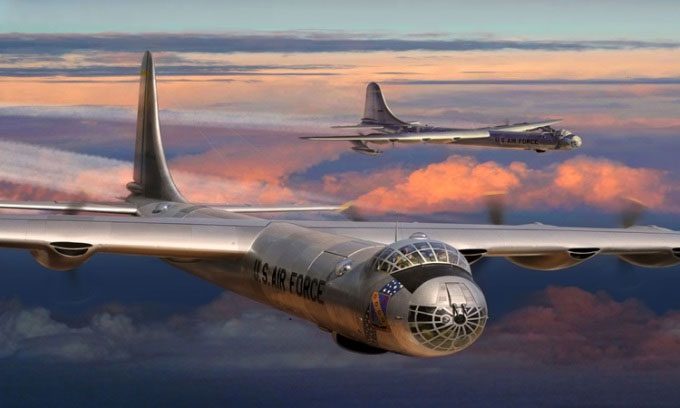After a decade of operation, the B-36 “Peacemaker” stands as one of the most extraordinary aircraft ever to take flight.
Developed between World War II and deployed in the early days of the Cold War, the B-36 was the largest mass-produced piston-engine aircraft. It far surpassed the B-29 “Superfortress” and was eventually replaced by the equally impressive B-52 “Stratofortress.” According to Interesting Engineering, the “Peacemaker” was a bomber with a brief operational life.

The B-36 “Peacemaker” is one of the largest bombers ever produced. (Photo: Historynet).
Although the U.S. never utilized the B-36 in combat missions, it was designed as a strategic long-range nuclear bomber. With a maximum payload of 39,600 kg, the B-36 had a range of 16,000 km without needing to refuel.
In 1941, the U.S. Army Air Corps requested the development of a strategic bomber capable of intercontinental flight due to concerns about the reliability of overseas bases. In November 1941, aircraft manufacturer Consolidated Vultee, later renamed Convair, won the contract with its Model 36 design, defeating Boeing’s Model 385. The aircraft featured a wingspan of 70 m and was powered by six Pratt & Whitney R-4360 “XWasp” 28-cylinder piston engines. It had a fuselage length of 49 m and boasted four massive bomb bays.
The plane was also equipped with four General Electric J47 turbojet engines mounted on the wing’s leading edges, a significant innovation at the time. Thanks to this unique design, the aircraft could maintain a cruising speed of 370 km/h, and the J47 engine cluster could boost its maximum speed to 700 km/h.
A total of 380 B-36 aircraft were produced, with the last one rolling off the assembly line in August 1954. A year later, the B-52 entered service. After a decade, the B-36 was officially retired in 1959, with only a few remaining operational as reconnaissance aircraft, while others were modified to launch and recover the specialized RF-84F/K reconnaissance planes.
Of the 380 B-36s built, only four airframes still exist today, housed at the Castle Air Museum in Atwater, California, and the Strategic Air Command & Aerospace Museum in Ashland, Nebraska. The last B-36 produced is currently part of the collection at the Pima Air & Space Museum, adjacent to Davis-Monthan Air Force Base in Tucson, Arizona.
Convair also developed a civilian passenger version of the B-36, known as the Convair Model 37. Initially, Pan American Airways ordered 15 of these aircraft, but due to high fuel costs and significant oil consumption, the project was deemed economically unfeasible. The lack of orders to initiate production led to the project’s cancellation in 1949.


















































